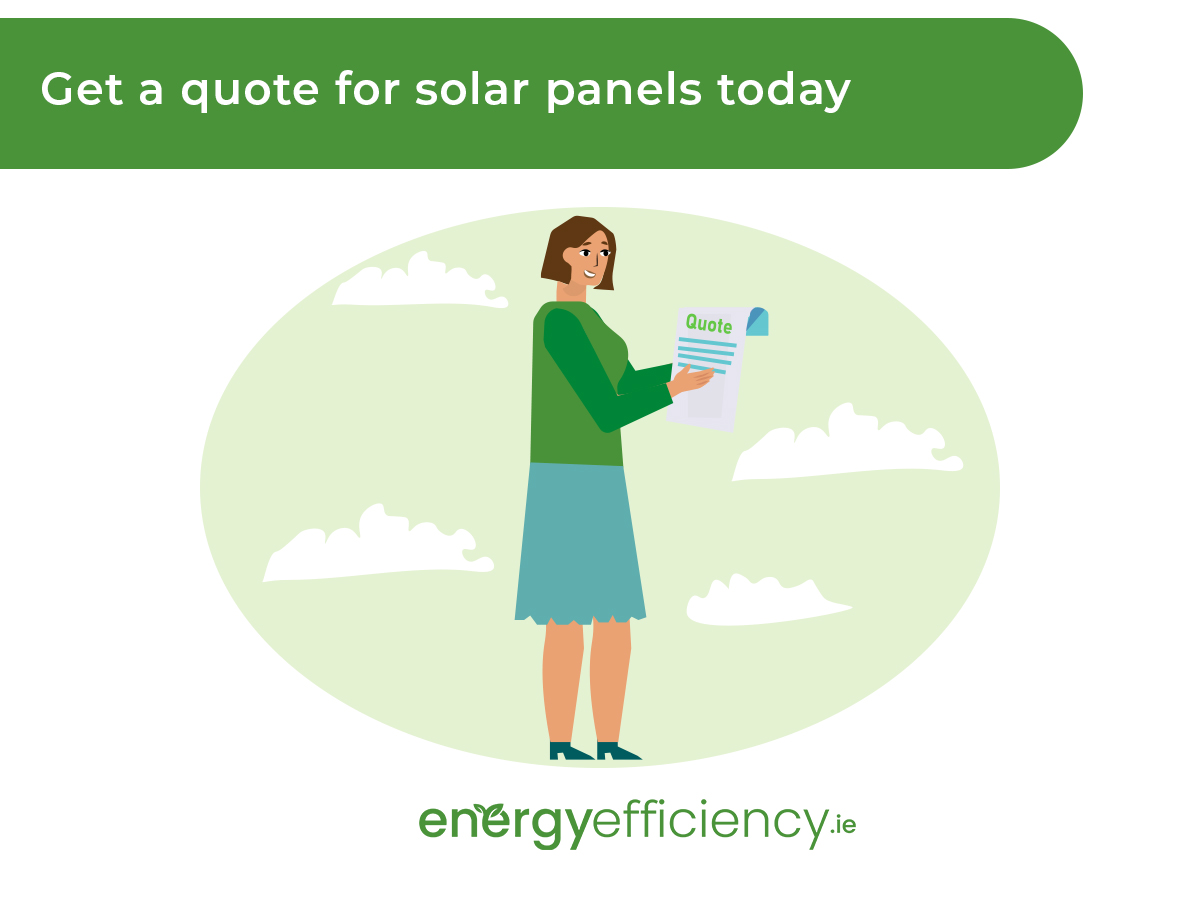There’s no doubt about it – solar panels in Ireland have taken a strong foothold and are becoming more and more popular each year.
Most people choose solar to reduce their bills and carbon footprint, but another benefit is that Irish households can also sell excess electricity back to the grid, resulting in even more annual savings from their PV system.
In this guide, we’ll explain everything you need to know about how to sell surplus solar power.
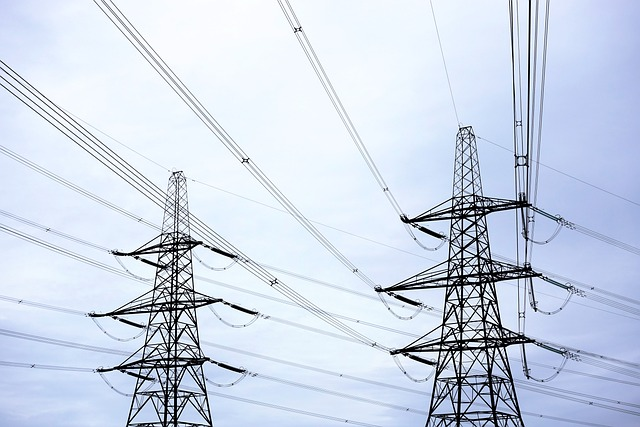
Table of Content
The First Steps to Selling Solar Electricity to the Grid
The first step is to install an array of solar panels on the roof of your property. If you want to sell excess electricity back to the grid, then you must have enough photovoltaic (PV) solar panels to produce excess renewable electricity.
Having a large enough solar panel system also future-proofs your home for further energy upgrades such as heat pumps and electric vehicles, while at the same time raising the value of your home.
The second thing you have to do is to get a smart meter so that you can receive microgeneration payments.
As well as allowing you to sell surplus renewable energy generated by your solar system, having a smart meter also allows you to track and monitor your electricity usage. We discuss the benefits of having a smart meter below in more detail.
How to Sell Solar Power Back to the Grid
Once you have a solar system and the ESB has installed your smart meter, you can think about exporting excess electricity.
Your energy supplier will pay you for electricity that you supply back to the grid by means of the Clean Export Guarantee.
This payment has been around since 2022 under the Micro Generation Support Scheme (MSS).
Microgeneration is a general term used to refer to electricity generated by renewable technologies such as solar PV, micro wind turbines, micro-hydro and micro-renewable combined heat and power.
This scheme also allows for homeowners to apply to the Sustainable Energy Authority of Ireland (SEAI) for a grant towards the initial cost of installing solar PV equipment.
In 2024, SEAI grants up to a maximum of €2,100 are being awarded to homeowners for solar PV panels.
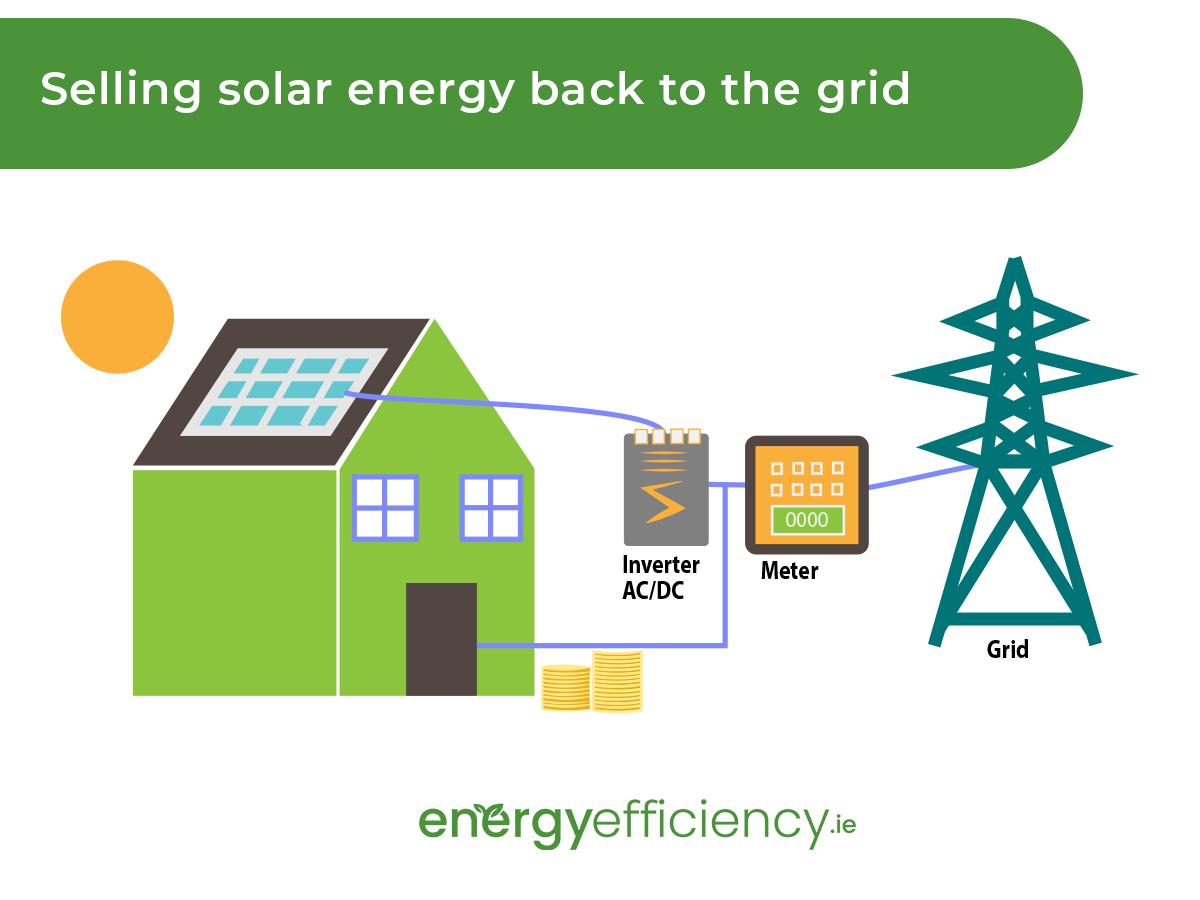
Latest Rates for Selling Solar Energy Back to the Grid
The amount of money you can make selling surplus energy depends on two main factors: how much excess electricity your solar system produces, and the rates offered by your electricity supplier. Here are the latest rates offered by electricity suppliers in Ireland for solar.
Note: Rates accurate as of 30th March 2024
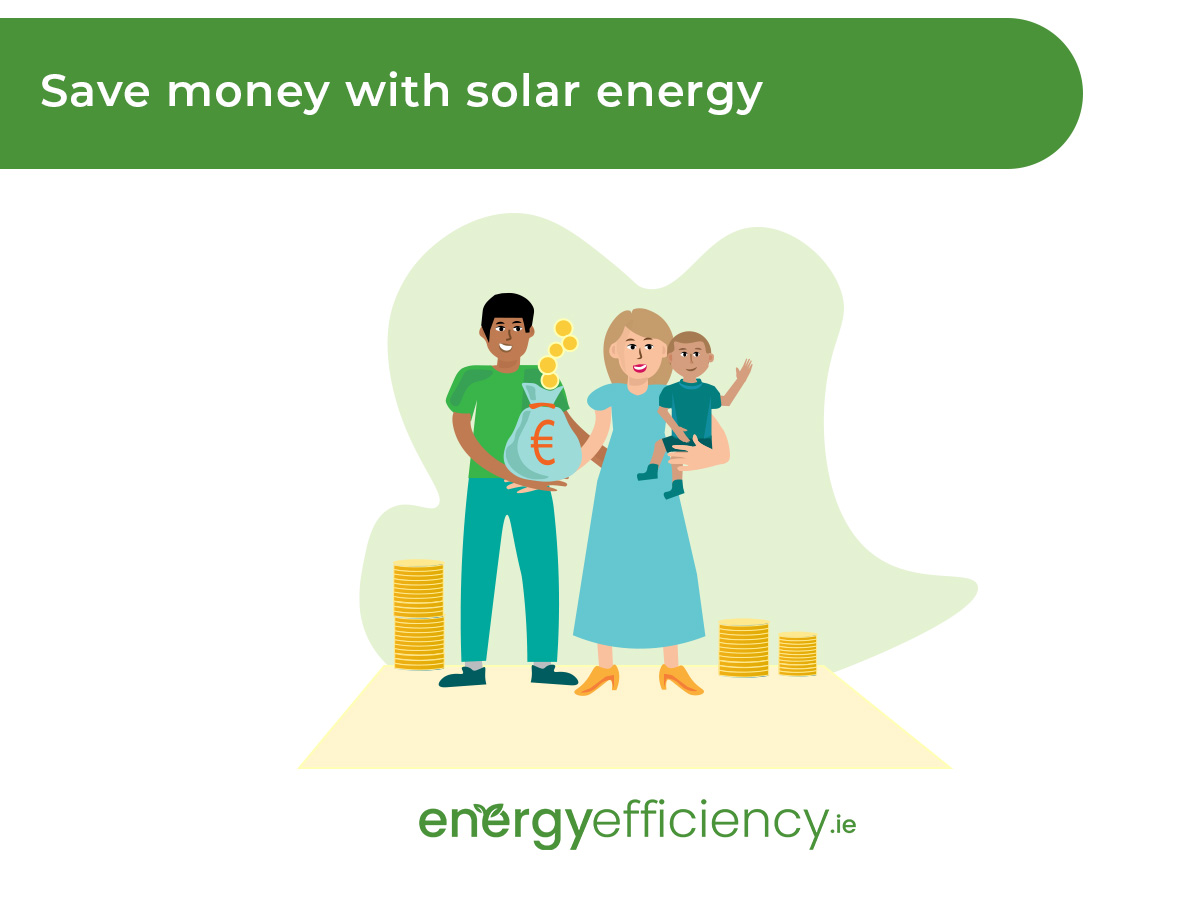
How much surplus energy will I have to sell?
So once you have your solar PV installed, let’s look at how much solar electricity you will have left over to sell back to the grid.
Again, the amount of surplus energy that your PV system will produce depends on different factors.
One of the main factors will be the size of your PV system. Let’s look at two different sized systems, and calculate how much you could potentially be able to sell back to the grid.
The average electricity usage in Ireland is 4,200 kWh. A solar system of around 20 square meters, or 3kW, can generate 10 to 15 kWh per day on a clear summer day. That would work out at around 4,000 kWh per year, and in theory, enough to power the average Irish home.
But of course, Ireland is not always sunny, and much less sunlight will reach your panels in the winter.
However, many homeowners have more space to work with, and therefore opt for a larger array of solar panels. A large PV system, say 6kWh, could generate over 5,000 kWh per year.
Say your household consumes 4,200 kWh of electricity per year (the average in Ireland), that would mean that you’d have 800 kWh to sell back to the grid, i.e. extra savings of about €170!
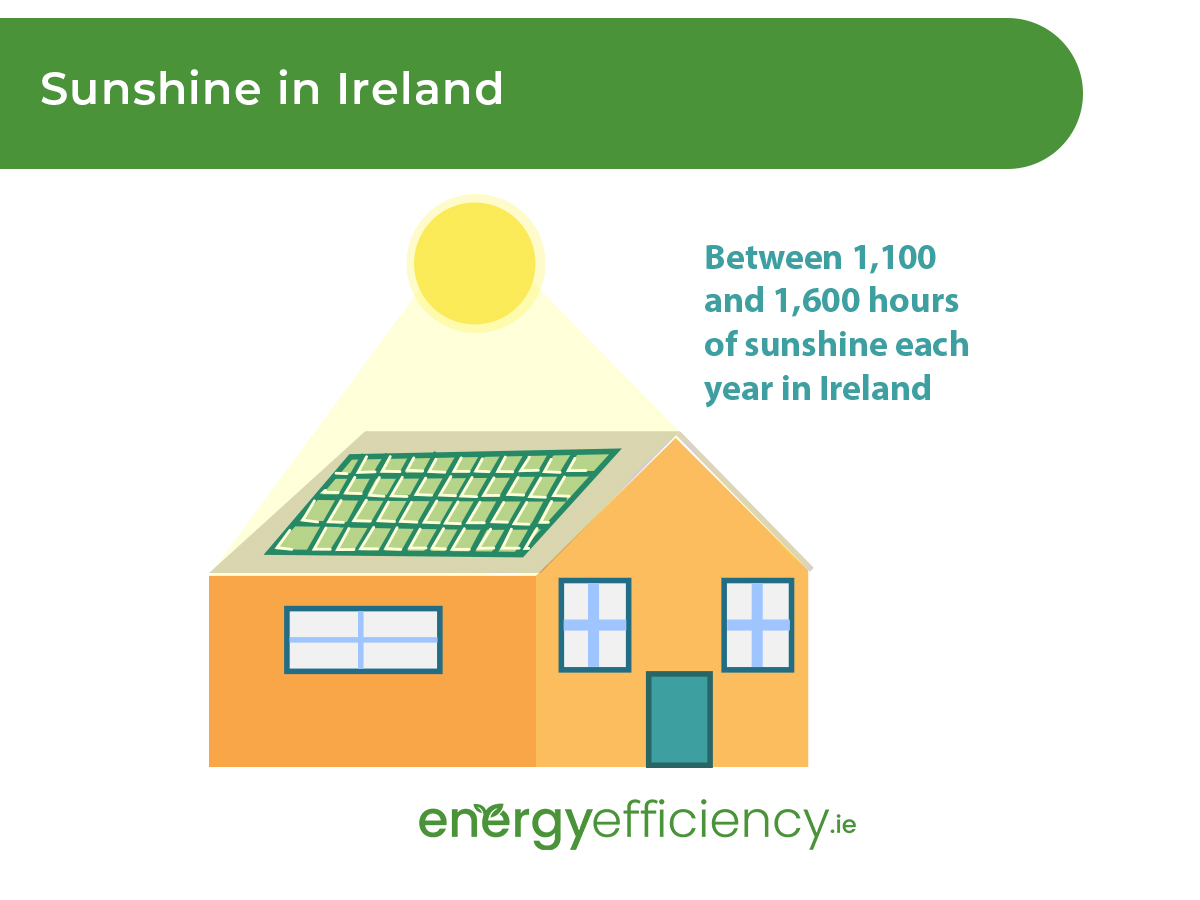
7 Years
A typical solar installation is fully paid back within 7 years. All solar panels we recommend are under warranty for 25 years, so you will enjoy at least 17 years of free energy generation.
0% VAT
As of 10 May 2023, the government has removed all VAT on solar installation and solar panel supply. This means solar has never been more affordable!
Government Grants
There is a range of government grants available for all new solar installations. Our team will guide you through the application process.
How do I get a smart meter?
ESB Networks are in the process of installing 2.4 million smart meters across Ireland before 2024, and they are currently about half-way through the smart meter installation process.
Your solar installer will inform your electricity supplier that you have installed a solar PV system, and you will then receive your smart meter.
Every home in the country will be offered a smart meter, and although they are not compulsory, there are a few major benefits that they offer that the old electricity meters don’t.
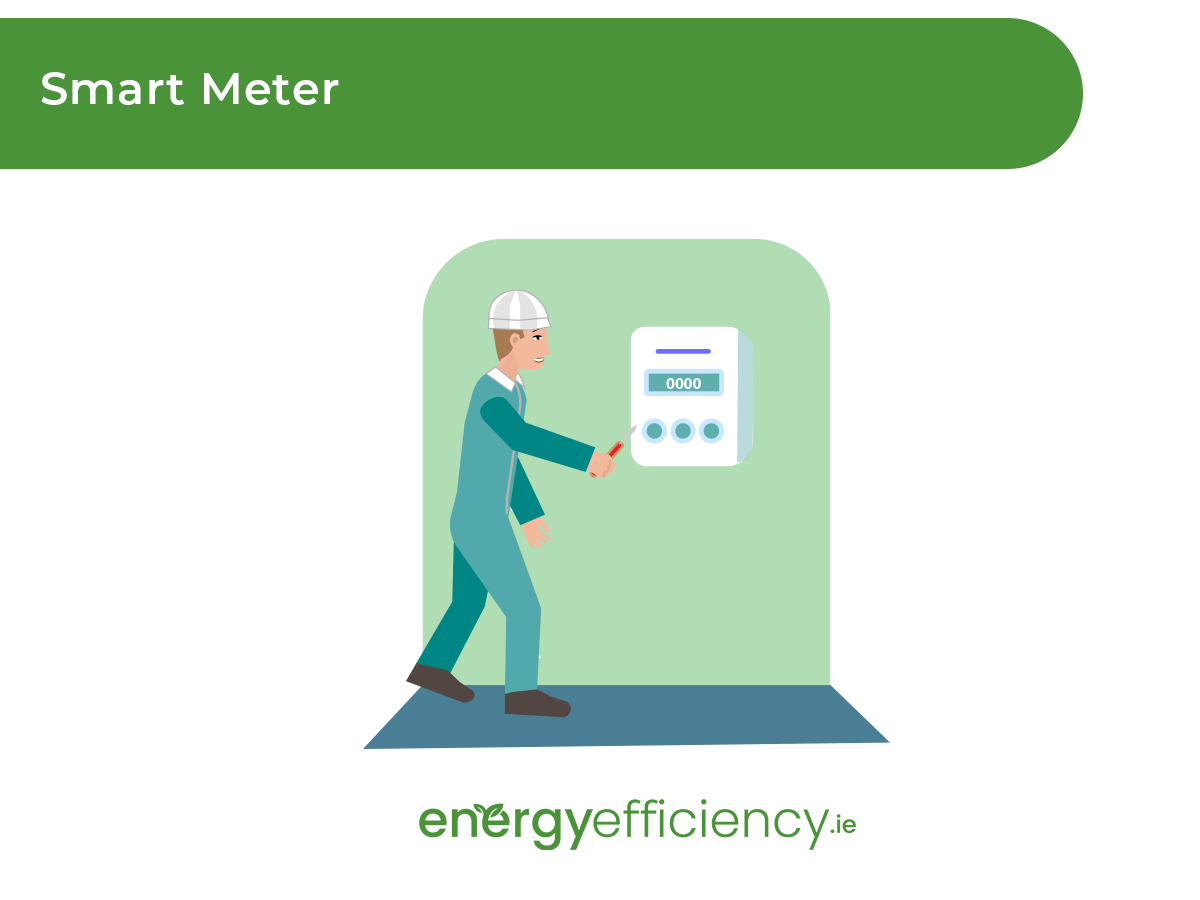
Benefits of Having a Smart Meter
SELLING SURPLUS ENERGY
Surplus electricity generated by your solar energy system can be sold back to the grid, meaning any surplus energy generated by your solar PV system won’t be wasted.
ELECTRICITY CONSUMPTION
Detailed data will be available from electricity suppliers about your energy consumption, meaning you can make changes to your energy usage to save money.
ACCURATE BILLS
Your electricity bill will no longer be based on previous readings taken from your old electricity meter, meaning accurate bills from your utility company based on your own electricity consumption each month.

Do I pay tax on income from solar panels?
Since the start of 2022, a tax exemption applies to income up to €200 from selling solar energy back to their electricity grid from their suppliers. The payments are known as the Clean Export Guarantee (CEG).
The Irish government believes that this covers the likely income for 95 per cent of homeowners who have solar, meaning that in all likelihood, you will not have to pay tax on the electricity you sell back to the grid.
This is because most domestic customers will have an installation of below 6kW.
This move was followed by further reductions in tax on solar energy. In May 2023, VAT on the supply and installation of solar panels was reduced from 23% to 0%.
The removal of VAT reduces the payback period for the average solar installation in Ireland (€8,000) from 7 to 6.2 years.
Selling Excess Solar Electricity is Quick and Easy
Once you have your smart meter installed, the whole process of selling excess electricity back to the grid is quick and easy.
But to consistently get the best prices, you should change your electricity supplier regularly, which is also true for those with solar.
If you are selling excess solar electricity, you should take into consideration the price of the electricity, as well as rates for exported electricity.
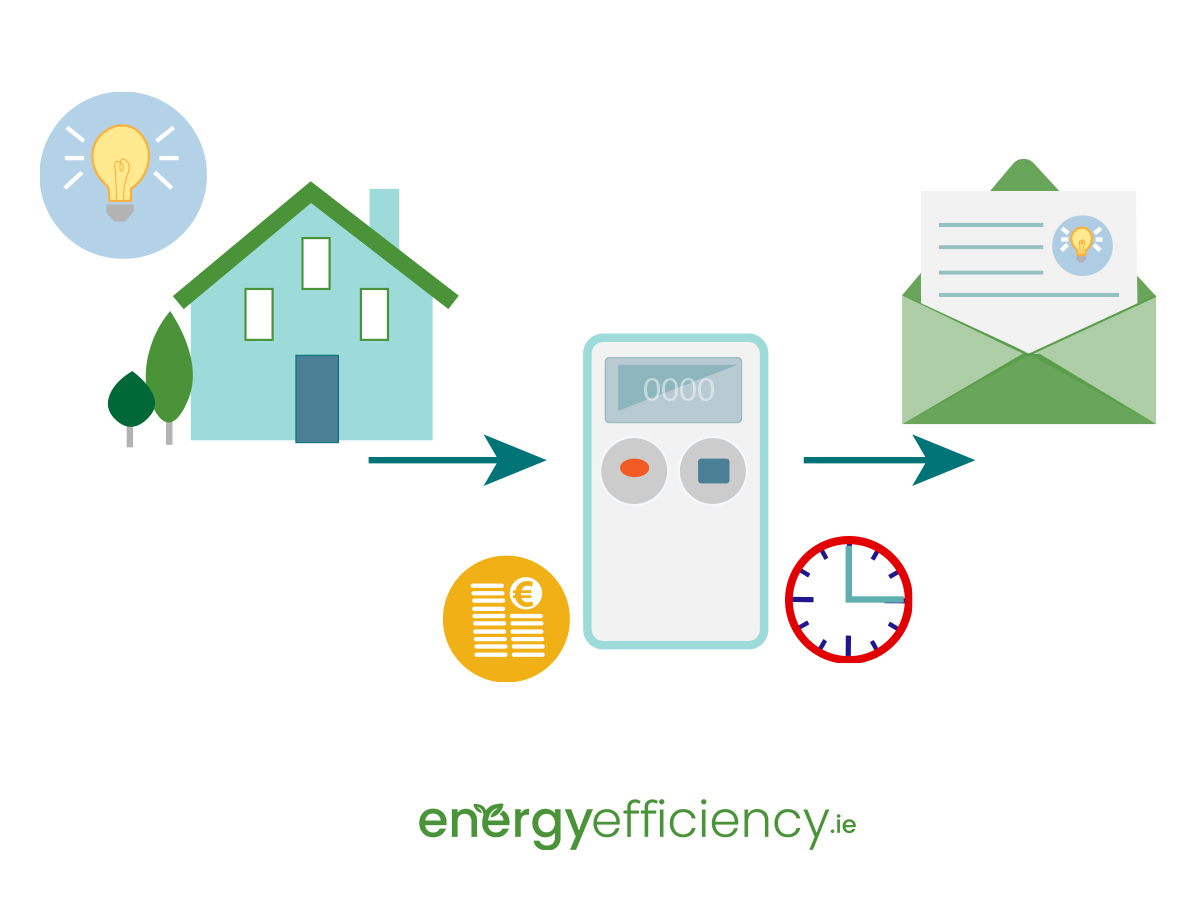
The Payback Period for Solar Panels
The solar payback period is basically how long it will take to fully pay off the initial installation costs for your solar power system. And of course, selling excess electricity will help to reduce this period.
The Department of the Environment, Climate and Communications estimates that after SEAI grants, the average payback period for solar in Ireland is just over 6 years. This estimate is based on an initial installation of €8,000 (after grants).
But this could be higher or lower depending on your solar output, which can be influenced by a number of factors such as the quality of the system, and exposure to direct sunlight.
Solar Panel Tips
How Solar Energy Works
We have focused mainly on how you can save money by selling excess electricity back to the grid, but that solar is a renewable energy source must not be overlooked.
Renewable solar energy helps offset your carbon footprint by utilising clean, renewable energy from the sun’s rays.
PV panels contain photovoltaic cells which have semiconductor materials such as silicon. An electrical current is generated when photons interact with this material, creating direct current (DC) electricity.
This is transformed into accelerating current (AC) electricity by a solar inverter, allowing you to use it in your home, or export it back to the electricity grid.
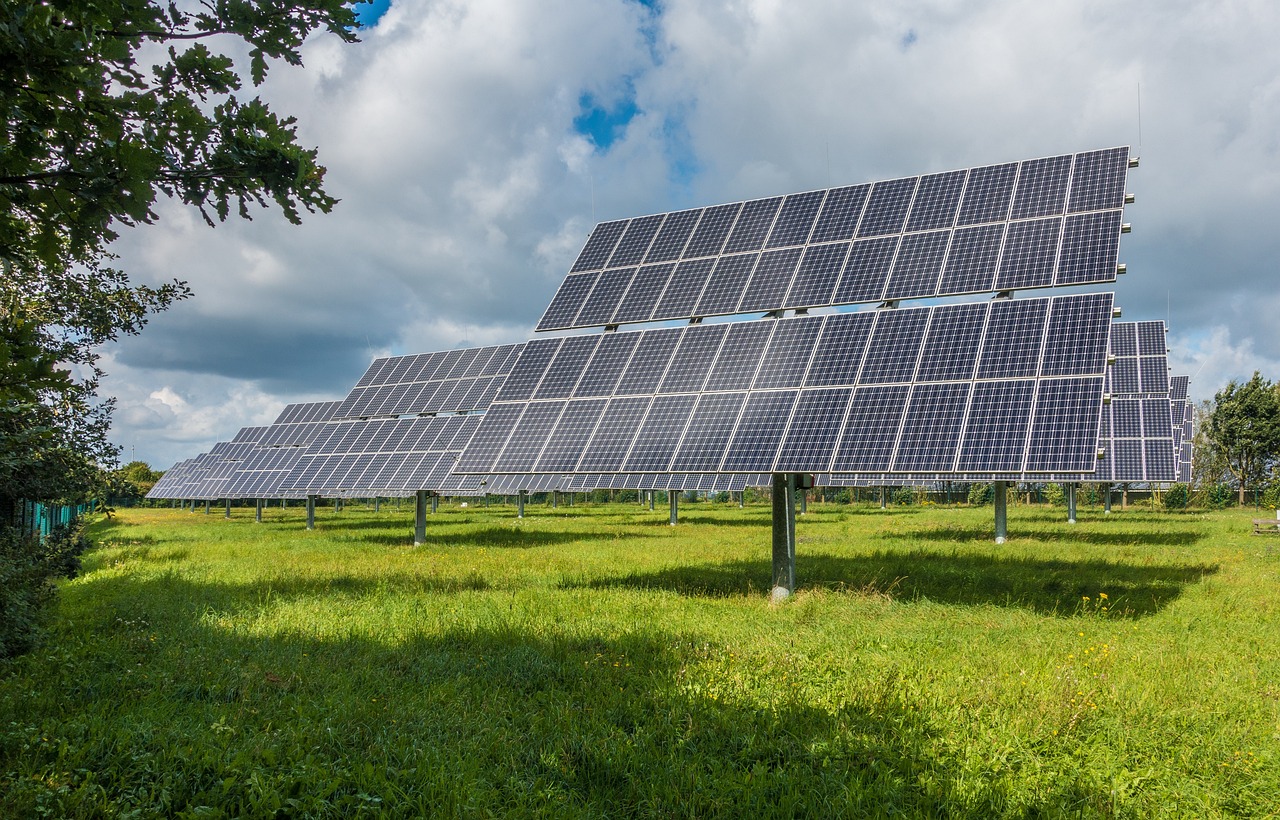
Learn How to Sell Solar Energy Back to The Grid Today
If you’re considering getting solar panels installed on your home or business, it’s important to talk to a reliable and trusted installer to avoid any problems and to explore your options.
Take our questionnaire today, and we’ll set you on the right track so that you can choose the ideal solar power option for you.
